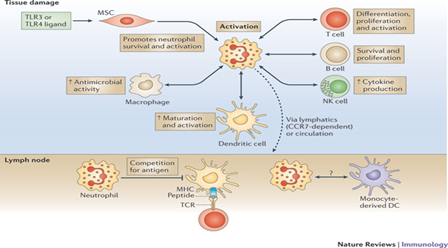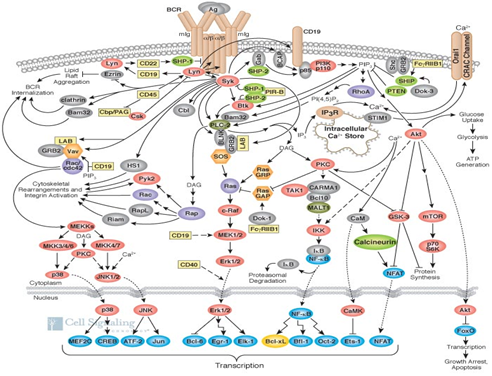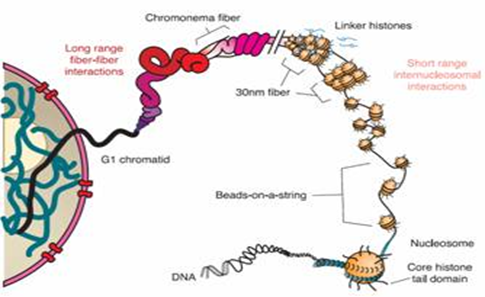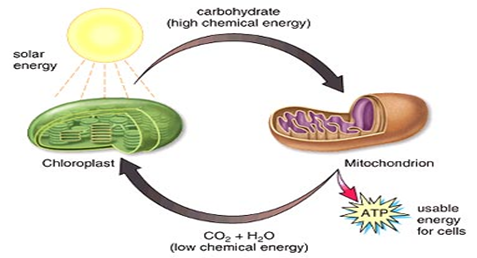Authors: Swapnil Gorakh Waghmare 1*, Komal Ramchandra Pawar 2
1CPBMB, Kerala Agricultural University, Thrissur-680656
2VDCOAB, Vasantrao Naik Marathwada Agricultural University, Parbhani-431402
*Email: swapnil.waghmare1856@gmail.com
Introduction:
The micro meter sized cell was first discovered by Robert Hooke in 1665. After long period in 1839 Cell theory was given by three scientist Matthias Jakob, Schleiden and Theodor Schwann. Then after one century molecular biology came to know with the help of biochemistry, genetics, microbiology, virology and physics. Till now molecular biology is a mystery for human being. But now we know the basic principles of life how it is going on. We have enough information about Cell Cycle, Cell Regulation, Cell Signaling, Immunity, Heredity, Biochemical reactions etc. Then every single living thing on earth is a cell having specific role to regulate life on earth. Similarly, if we consider human beings are also a group of cells then we should follow all the principles of molecular biology. We can become perfect as the micrometre sized cell. There are several mechanisms within a cell that helps to cell communication, signaling, defense, membrane transport, memory storage, energy production, cell functioning etc. It is possible to use these mechanisms in social life of human being. We can find each and every mechanism in a cell that can be implemented in our society. Cell signaling and communication can be used to develop telecommunication, cell defense can be used to strengthen army and membrane transport can be used to facilitate border transport. Similarly, we can find more mechanisms and principles within a cell to enhance social life of human being.
Methodology:
Molecular biology is an essential subject for understanding living world. Now days, it is necessary to think about how the biomolecules are regulated in a cell towards its specific functions. How beautifully all are working within a cell having size in micrometre. How specifically cells are regulated by a small signaling molecules. A very small molecule can determine the fate of cell whether divide or die. Our each cell have its own border and military to defend a foreign molecules, it is having specific gates/channels. Everything within a micrometre cell is arranged that we can’t understand completely. For understanding a single cell, we have spent many years. But the knowledge we have about Molecular Biology may be sufficient for emergence of new branches of science. We can use these principles in engineering, social science, telecommunication and defense etc. These cellular mechanisms can be correlated to our day today life. All we need to understand and correlate these mechanisms or techniques with techniques which we have developed. Then the next step is to develop the techniques inspired by cellular mechanisms. After that our life will be perfect as like a single micrometer sized cell if we succeed in these branches.
Applications
Defense:
By understanding the basics of immunology and their mechanisms of hunting the foreign molecules inside the body, we can develop such a specific defense system for country. There are several mechanisms by which a tiny cell can defend several types of viruses or bacteria. It can generate signals and transmit in whole body within fraction of time. Then these signals help other cell to track that virus or bacteria. By using these basic principles or their techniques we can train the army or we can develop new tools that resembles the mechanisms at molecular level.

Fig. 1 Immune cells
Image source:
http://www.nature.com/nri/journal/v11/n8/fig_tab/nri3024_F1.html
Communication:
Now days communication is the most developing area and we can add more into that by applying some molecular mechanisms. Cells have the mechanisms that can transmit signal from foot to brain within fraction of second. All the signals that send by the cells are correct and specific, so we can study all the basic idea behind these mechanisms.

Fig. 2 Cellular communication
Image source:
http://blogs.discovermagazine.com/science-sushi/2013/08/24/ask-discover-how-do-cells-communicate/
Transport:
Easy and fast transport is the another essential demand of the society. We can compare the transport mechanisms inside the body and at social level. Transport of the biomolecules inside the cell is specific and very much correct. These mechanisms use a coding or signaling systems to target these biomolecules towards the specific places inside or outside the cell. Our barcoding system and the signaling mechanism within cell are similar, but still the cells are more specific than us. So we can find the basic techniques and mechanisms for easy and fast transport for long distance.

Fig. 3 Protein transport
Image source:
http://cc.scu.edu.cn/G2S/Template/View.aspx?courseType=1&courseId=17&topMenuId=113302&menuType=1&action=view&type=&name=&linkpageID=113473
Constructions:
Long lasting constructions is the another basic need of the society. Dinosaurs skeletons are still present on earth; it is the success of a living organism that they have developed such material which has billion years of guarantee. A single cell also contains a cytoskeleton inside the cell that helps to maintain its structure and other cellular movements. These cytoskeletons are made up of the microfilaments, microtubules and intermediate filaments those are microscopic structures but still they give the strong support to the cell. We can study these and many other things that helps in the construction of living organism.

Fig. 4 Cytoskeleton
Image source:
http://simplebiologyy.blogspot.in/2014/07/centriole-cytoskeleton-and-vacuole.html
Data Storage:
Cellular data is stored into the DNA. DNA is made of only four bases i.e. Adenine, Thymine, Guanine and Cytosine. DNA of a single cell contains the information to develop entire organism. How these living cell developed such tiny storage system that can fit inside the cell? If we get all these answers behind the mechanism of cellular data storage, there will be no more question about data storage.

Fig. 5 DNA compaction
Image source:
http://www.ntu.edu.sg/home/larsnor/research.html
Energy production:
Energy production is the most important thing for the society. We are mostly dependent on the plants for the food. Photosynthesis is the universal mechanism that harvest the sun light and convert it into the food. Human also became successful to develop solar panels to harvest the sun energy, but still the efficiency is less. Cell has developed mitochondria to convert stored energy in ATP without any pollution. We can focus on such mechanism for the production of energy without any pollution problem. We have much knowledge about these reactions inside the cell, only we need to apply these basic principles in our day today life.

Fig. 6 Chloroplast and mitochondria
Image source:
https://sites.google.com/site/cserfass3rd2014/home/3rd-period-biology-honors-project/chloroplastvsmitochondria
Conclusion:
Life on earth has experience of billion-trillion years and always it is better to learn from the experienced one. It is a shortcut to learn these mechanisms from the living cell rather than to develop new one. We need to understand more about our self to become more successful and happy.
About Author / Additional Info:
I am a MSc Plant Biotechnology student and interested in research related to molecular biology of plants.